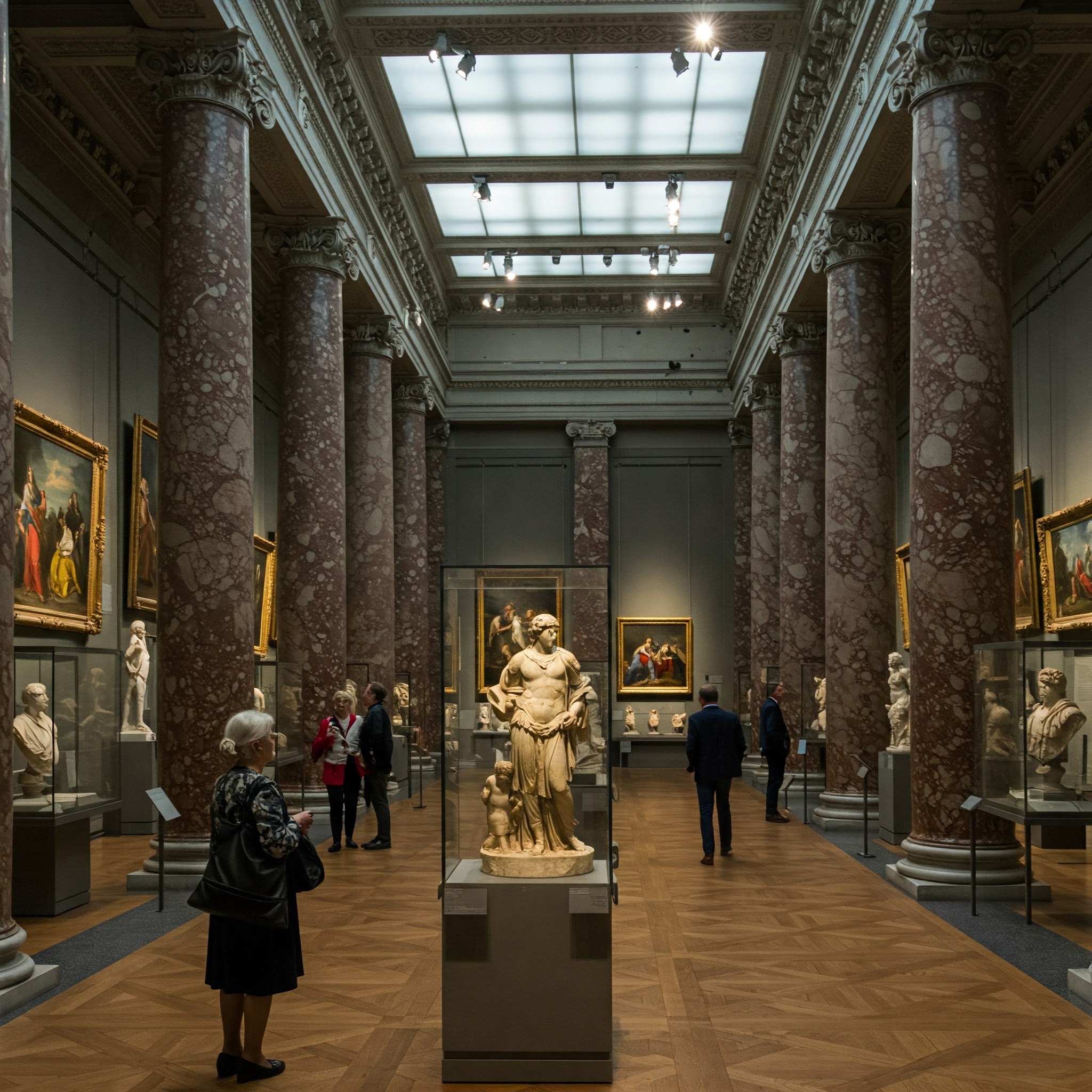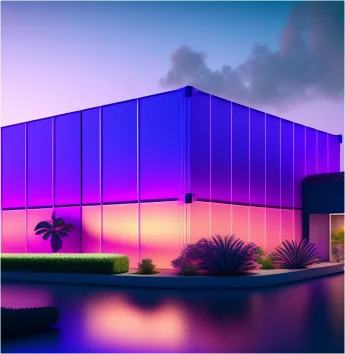“Art is the perfect subject of light”
Power of Lighting in Museums and Galleries
The power of time transforms the present into memory, a hobby into art, and everyday life into history. Museums and galleries serve as portals to the past, preserving and showcasing these transformations. But have you ever considered what makes a painting glow or how the intricate details of a sculpture stand out? The answer lies in lighting.
“When art co-exist with light, the interdependency defines the experience”
Why Lighting Matters in Museums and Galleries
An art form that enhances perception, evokes emotions, and tells a story. Imagine standing before a centuries-old masterpiece. Without the right lighting, its rich brushstrokes, vibrant colors, and delicate textures remain unnoticed. Thoughtfully designed lighting makes an exhibit come alive, guiding the viewer’s eye and enriching the experience.
Additionally, studies show that well-lit exhibits hold visitor attention longer, foster deeper engagement, and leave lasting impressions. The right balance of light and shadow can create an immersive atmosphere that turns a simple viewing into an unforgettable moment.
The Challenges of Museum Lighting
Achieving perfect lighting in museums and galleries requires balancing aesthetics, preservation, and functionality. Poor lighting can flatten artwork or cause damaging exposure, while excessive brightness or UV rays can fade and degrade delicate pieces.
Key challenges include:
- Preservation Risks: UV and high-intensity light can cause fading, discoloration, and material degradation.
- Glare & Reflection: Glass frames and polished surfaces require careful positioning to minimize reflections.
- Inconsistent Illumination: Uneven lighting can overexpose some areas while leaving others in shadow.
- Energy Efficiency: Museums require lighting that operates for long hours without excessive energy consumption or heat output.
The Key Elements of High-Quality Museum Lighting
Creating exceptional museum and gallery lighting involves precision and expertise. The following principles ensure exhibits are both beautifully illuminated and well-preserved:
1. Color Accuracy
Color Rendering Index (CRI) ensures artwork is displayed in its true tones. A CRI of 90 or higher brings out the authentic hues as the artist intended.
2. Balanced Light Spectrum
A spectrum close to natural daylight enhances the vibrancy of exhibits. Warm lighting fosters intimacy, while cooler tones emphasize definition and detail.
3. Directional Control
Adjustable fixtures focus light on specific features. Spotlights highlight texture, while diffused lighting prevents harsh shadows.
4. Optimized Brightness (Lux Levels)
Different materials require specific brightness levels:
- 50 lux: Delicate pieces like watercolors and manuscripts
- 150 lux: Most paintings and sensitive artifacts
- 300 lux: Sculptures and robust installations
5. UV & Infrared Protection
High-energy UV and infrared radiation are harmful to art. LED lighting is the preferred choice for its low UV/IR output, ensuring longevity without damage.
6. Flicker-Free & Comfortable Illumination
Flickering lights can cause discomfort and reduce engagement. Advanced LED systems provide smooth, consistent lighting for an optimal viewing experience.


“Every art is crafted with passion, the lighting that complements its existence needs equal attention – in quality, quantity and substance“
Crafting the Perfect Museum Lighting Experience
We don’t just provide lighting—we create an atmosphere. Our expertise in architectural and artistic lighting in museums and galleries ensures a seamless blend of technology, conservation, and aesthetics for museums and galleries worldwide.
Key Focus Areas:
* Conservation-Focused Design: Our lighting solutions minimize UV exposure and adhere to museum-grade lux levels to protect artwork from degradation.
* Visual Comfort & Glare Reduction: Carefully designed angles and diffused lighting eliminate distracting reflections, enhancing clarity and immersion.
* Adaptive & Flexible Installations: Exhibitions evolve, and so do their lighting needs. Our adjustable fixtures seamlessly integrate into display cases, walls, and ceilings.
* Energy-Efficient Solutions: Our advanced LED technology reduces energy consumption without compromising on brightness, color accuracy, or longevity.
* Custom Lighting Ambience: Whether it’s a historic museum or a contemporary art gallery, we tailor lighting designs to create the perfect mood and experience.
* Integration of Natural & Artificial Light: We ensure a harmonious balance between daylight and artificial lighting, using filters and control systems to optimize exposure.
Illuminate with kaash
Lighting is about preserving history, crafting experiences, and bringing art to life. Every beam has a purpose, from highlighting intricate details to evoking emotion in viewers. The next time you step into a museum, notice how light shapes your experience—it’s working harder than you realize.
At Kaash Light Engineers, we offer state-of-the-art LED products, intelligent lighting controls, and expert consultation for curators, architects, and exhibition designers. Whether illuminating a historic landmark or a modern art space, our customized solutions ensure your collection shines.
Ready to Elevate Your Museum Lighting?
Explore how we can enhance your space. Visit https://kaash.eu/services or reach out directly via https://kaash.eu/about-us. Let’s craft a lighting experience as timeless as the art it reveals.




